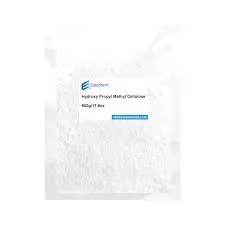
ഡിസം . 04, 2024 07:51 Back to list
Understanding HPMC HS Code and Its Applications in Various Industries
Understanding HPMC and Its HS Code A Comprehensive Overview
Hydroxypropyl Methylcellulose (HPMC) is a versatile cellulose derivative that has found a multitude of applications across various industries. From pharmaceuticals to food processing, HPMC serves as a crucial ingredient due to its unique properties such as water solubility, film-forming ability, and thickening characteristics. Given its widespread use, understanding the Harmonized System (HS) code for HPMC is essential for businesses engaged in international trade.
What is HPMC?
HPMC is a non-ionic, water-soluble polymer derived from cellulose. It is synthesized by treating cellulose with propylene oxide and methyl chloride. This chemical modification enhances cellulose's solubility and functionality, making it suitable for diverse applications. HPMC is primarily used as a thickening agent, emulsifier, and stabilizer in various products, including
1. Pharmaceuticals HPMC is frequently used in the formulation of tablets and capsules due to its ability to control the release of active ingredients. Its gel-forming properties help in creating sustained-release formulations, ensuring that medication is released slowly over time.
2. Food Industry In food production, HPMC is utilized as a food additive, serving as a thickener, stabilizer, and emulsifier. It aids in maintaining the texture and consistency of products such as sauces, dressings, and baked goods.
3. Construction Materials In the building industry, HPMC is mixed with cement and mortar to improve the workability and adhesion of construction materials. This results in stronger, more durable finished products.
4. Cosmetics and Personal Care HPMC is also prevalent in the cosmetic industry where it is used to enhance the texture and stability of lotions, creams, and gels.
hpmc hs code

The Importance of HS Codes
The Harmonized System (HS) is an internationally standardized system of names and numbers for classifying traded products. The HS code plays a crucial role in international trade as it helps streamline customs processes and facilitate the collection of international trade statistics. Each product is assigned a specific HS code, allowing customs authorities to identify, categorize, and assess the applicable tariffs and trade regulations.
HPMC's HS Code
Identifying the correct HS code for HPMC is critical for manufacturers, exporters, and importers to ensure compliance with regulatory requirements. The HS code for HPMC is typically categorized under 3912 – Cellulose and its chemical derivatives, otherwise specified or included. It is essential to note that the specific code may vary depending on the HPMC's grade and application. Businesses must consult the latest HS code database or the customs authority in their country to verify the correct code for their specific product formulation to avoid issues during import or export.
Challenges in Classification
One of the challenges faced by companies dealing with HPMC is the classification under the HS system. Variations in formulation and intended use can lead to different classifications. Additionally, countries may have slight variations in their HS codes or interpretations, making it imperative for businesses to conduct thorough research and engage with customs experts.
Conclusion
The significance of HPMC in various industries cannot be overstated. Its unique properties make it an indispensable ingredient in countless products, thus highlighting the necessity for proper classification under the HS code. Understanding HPMC’s HS code enables businesses to navigate international trade more efficiently, ensuring compliance and avoiding potential legal issues. As international trade continues to grow, staying informed about product classifications, including HPMC, will remain critical for manufacturers and traders alike. By prioritizing accurate classification, businesses not only enhance their operational efficiency but also contribute to the integrity of global trade practices.
-
Versatile Hpmc Uses in Different Industries
NewsJun.19,2025
-
Redispersible Powder's Role in Enhancing Durability of Construction Products
NewsJun.19,2025
-
Hydroxyethyl Cellulose Applications Driving Green Industrial Processes
NewsJun.19,2025
-
Exploring Different Redispersible Polymer Powder
NewsJun.19,2025
-
Choosing the Right Mortar Bonding Agent
NewsJun.19,2025
-
Applications and Significance of China Hpmc in Modern Industries
NewsJun.19,2025







